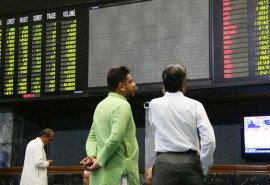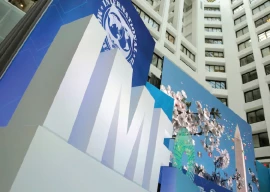
To absorb economic shock, set up SEZs
They will create massive job opportunities, forge industrial linkages
ISLAMABAD: Pakistan’s economy is in a shambles. It is struggling to find ground. International lenders and partners are looking for repayment of their debt.
Livelihood opportunities are scarce, absolute poverty has gripped 25% of the population and large-scale industries’ production is on the wane. Agriculture production is facing formidable challenges and exports are not picking up pace.
In a nutshell, the government is struggling to bring the economy back on track. Earlier, there were some signs of improvement, but the economy suddenly took a beating with the emergence of Covid-19 pandemic.
Coronavirus has posed multiple challenges to every sector of the economy. It is feared that exports will go down as major export destinations of Pakistan have been struck hard by the Covid-19.
The United States, United Kingdom, Germany, Spain and Italy are Pakistan’s major export destinations, along with China, but these countries are going through the worst phase of the pandemic. Thousands of people have died there and their economies have suffered immense losses.
Millions of people have filed jobless claims in the US. It is predicted that the impact of the virus will be felt for a longer period of time. These factors will hurt the purchasing power of consumers, leading to lower demand for imported commodities.
It will have negative implications for Pakistan’s exports. We tried to foresee the impact by building three scenarios.
Conservative estimates show that Pakistan can lose $617 million (10% shock), $1.2 billion (20% shock) or $1.8 billion (30% shock) in export revenue in three months (April-June). The situation can be more complicated if export destinations do not come out of the Covid-19 shock soon. The impact on exports will directly hit the export-related industries, resulting in closure of businesses and joblessness.
Agriculture will be another sector that will bear the brunt of Covid-19 devastation. It has hampered harvesting as Rabi crops are at the picking stage. Lockdown in the country is making it extremely difficult for farmers to go for smooth harvesting.
Apart from this, agriculture is threatened by climate change. It is certain that rains in the past two months will push down production and affect the quality of produce.
We built four scenarios by assigning a certain percentage of shock. Scenario-1 covers 5% shock, scenario-2 10% shock, scenario-3 15% shock and scenario-4 20% shock.
According to these scenarios, the climatic factors can reduce wheat production by 1.35 million tons, 2.7 million tons, 4.05 million tons and 5.4 million tons respectively. It will restrict per capita wheat availability to 111 kg, 105 kg, 99 kg and 93 kg respectively.
Inclusion of post-harvest losses will further lower the per capita wheat availability to 105 kg, 100 kg, 94 kg and 89 kg respectively for the four scenarios.
The situation for other major Rabi crops such as gram, potato, onion, etc is also not very good. It is feared that output of all these crops will fall. The situation will turn grim if the potential loss due to locust attacks is included.
The Covid-19 and climate change will have a damaging impact on Pakistan’s economy. Major repercussions will be felt in income and jobs of people, businesses and inflation.
Industrial closure due to lower exports will create joblessness in urban and semi-urban areas. It will increase urban poverty.
Poor performance of the agriculture sector will slash income and revenue of the farming community. It is feared that rural poverty will also increase and lower production of agricultural commodities will trigger price hike, especially in food items.
Owing to the global spread of Covid-19, it has made it difficult for Pakistan to look outside as all countries are going through this shock. It has been forecast by the IMF, World Bank and World Economic Forum that repercussions of the Covid-19 will be felt for longer periods. They see trade as a major victim with overall impact of $2-3 trillion.
Silver lining
Fortunately, Pakistan can absorb the shock and recover by focusing more on the China-Pakistan Economic Corridor (CPEC). However, it will require visionary planning and rigorous implementation.
The government would have to look for low-hanging fruits according to needs of the country and divert attention and resources to those areas without compromising on long-term goals.
At present, Pakistan needs to create jobs and business opportunities to make up for the loss of business and employment. CPEC can help to create jobs which will, in turn, spark business opportunities by stimulating domestic consumption.
For that purpose, the government should immediately start building the Special Economic Zones (SEZs) under CPEC. It will give a boost to the construction sector and provide job opportunities.
The government should also take steps to forge backward linkages with the SEZs. It will give a fresh impetus to the construction sector as well as bring employment to the people. It is expected that only construction work will create hundreds of thousands of jobs, especially for the unskilled labour.
The completion of SEZs and backward linkages will have multiple benefits. First, it will bring investment in the country, which is direly needed at this point in time, and instill confidence in investors, especially from China.
Second, the forging of linkages will help industries to start the production process immediately. Most of the SEZs depend on domestic raw material for the production of finished products.
For instance, the industries in the Rashakai SEZ will mainly rely on agricultural produce and minerals from Khyber-Pakhtunkhwa as well as other parts of the country.
Similarly, the Allama Iqbal SEZ is being established for garment and textile production, which will require backward linkages with the cotton-producing areas and allied industrial areas.
The backward linkages will provide sustained sources of livelihood for the people. It will be a win-win situation in the short as well as long term.
In the short run, employment avenues will emerge and domestic consumption will get a boost. In the long run, investment will go up and industrialisation will be promoted.
Moreover, minimum government investment will be required in the SEZs as industrial units, office buildings and other structures will be constructed mainly by the private sector through their own resources.
Thus, Pakistan should start work immediately on all the SEZs. To ensure a smooth flow of investment, the country needs to improve the business environment by establishing efficient policy mechanisms.
In addition to this, the government should provide basic services like water, sanitation, electricity, gas, etc at a swift pace.
Pakistan must keep in mind that it cannot afford to lose this opportunity as it is the only available option in these tough times. The cost of loss of opportunities will be huge.
The writer is the Director of Asia and China Study Centre, SDPI
Published in The Express Tribune, April 20th, 2020.
Like Business on Facebook, follow @TribuneBiz on Twitter to stay informed and join in the conversation.















COMMENTS
Comments are moderated and generally will be posted if they are on-topic and not abusive.
For more information, please see our Comments FAQ